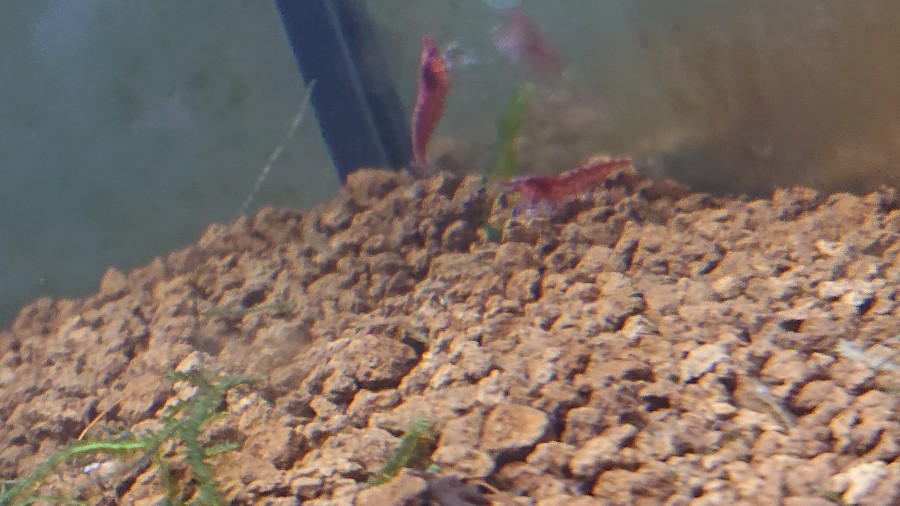Shrimp aquariums are a beautiful addition to any home or office space. They are easy to maintain and require minimal effort to keep them thriving. However, many shrimp aquarium owners wonder if they need to clean their tanks regularly. The answer is yes, shrimp aquariums do need cleaning, and it’s essential to maintain a healthy and thriving environment for your shrimp.

Keeping a shrimp aquarium clean is crucial to ensure the health of your shrimp. So Yes A Shrimp Aquariums Need Cleaning a dirty tank can lead to poor water quality, which can cause stress and disease for youre shrimp. Additionally, a dirty tank can also lead to the growth of harmful bacteria and algae, which can be harmful to your shrimp’s health. Therefore, it’s crucial to understand the importance of cleaning your shrimp aquarium regularly.
Cleaning a shrimp aquarium involves several procedures and requires specific equipment. The frequency of cleaning depends on various factors, such as the size of the tank, the number of shrimp, and the type of filtration system used. In this article, we’ll explore the importance of cleaning a shrimp aquarium, the frequency, and procedures involved in cleaning, and the essential equipment required to keep your shrimp healthy and thriving.

Importance of Cleaning a Shrimp Aquarium
Keeping a shrimp aquarium clean is essential for the health and well-being of the shrimp living in it. Neglecting to maintain proper water quality can lead to a host of problems, including disease, poor growth, and even death. In this section, we will explore the importance of cleaning a shrimp aquarium.
Water Quality Maintenance
One of the most critical aspects of maintaining a healthy shrimp aquarium is ensuring that the water quality is optimal. Shrimp are sensitive to changes in water parameters, and even small fluctuations in pH, ammonia, nitrite, and nitrate levels can be harmful to their health. Regular cleaning and water changes can help to keep these parameters in check, ensuring that the water remains safe and healthy for the shrimp.
To maintain proper water quality, it is recommended that shrimp aquarium owners perform regular water tests to monitor the levels of ammonia, nitrite, and nitrate. If any of these levels are too high, it is essential to take immediate action to correct the problem. This may involve performing a partial water change, adjusting the pH, or adding beneficial bacteria to the aquarium.
Shrimp Health and Longevity
In addition to maintaining proper water quality, cleaning the shrimp aquarium can also help to promote the health and longevity of the shrimp living in it. Over time, waste products such as uneaten food, dead plant matter, and shrimp excrement can accumulate in the aquarium, leading to a buildup of harmful bacteria and other pathogens.
Regular cleaning can help to remove these waste products, ensuring that the aquarium remains a healthy and safe environment for the shrimp. This can help to prevent disease and other health problems, allowing the shrimp to live longer, happier lives.
In conclusion, cleaning a shrimp aquarium is essential for maintaining proper water quality and promoting the health and longevity of the shrimp living in it. Regular water changes, testing, and cleaning can help to ensure that the aquarium remains a safe and healthy environment for these fascinating creatures to thrive.
Cleaning Frequency and Procedures
Regular Maintenance Schedule for Shrimp Aquarium
Maintaining a clean shrimp aquarium is crucial for the health and well-being of the shrimp. Regular maintenance is necessary to keep the water conditions optimal for the shrimp to thrive.
The frequency of cleaning depends on the size of the aquarium, the number of shrimp, and the filtration system. Generally, it is recommended to perform a 10-20% water change every week to remove any accumulated waste and debris. It is also important to clean the filter media once a month to prevent the buildup of harmful bacteria.
In addition to water changes and filter cleaning, it is essential to remove any uneaten food and dead plant matter from the aquarium regularly. This can be done using a siphon or a net to avoid disturbing the substrate.
Deep Cleaning Process for youre Shrimp Aquarium
In addition to regular maintenance, a deep cleaning process is necessary to remove any stubborn algae, bacteria, or debris from the aquarium. This process involves removing all the decorations, plants, and substrate from the aquarium and cleaning them thoroughly.
The aquarium glass should also be cleaned using an algae scraper or a magnetic cleaner. It is important to avoid using any harsh chemicals that can harm the shrimp or disrupt the water chemistry.
Before adding everything back into the aquarium, it is recommended to rinse them thoroughly to remove any remaining debris. It is also important to acclimate the shrimp slowly to the new water conditions to prevent stress and shock.
Overall, maintaining a clean shrimp aquarium requires regular maintenance and occasional deep cleaning. By following a proper cleaning schedule and procedure, the shrimp can thrive in a healthy and clean environment.
Essential Cleaning Equipment for Shrimp Aquarium

Keeping a shrimp aquarium clean is essential for the health and well-being of the inhabitants. Here are some of the essential cleaning equipment that every shrimp aquarium owner should have:
Cleaning Tools for Shrimp Aquarium
- This is one of the best scrapers you can get on amazone
- Best Cleaning Sets on amazone
- Best Substrate Siphons
- Best Substrate Siphon set Sets
Filters and Filtration Media
Filters are an essential part of any shrimp aquarium. They help to remove debris, excess food, and waste, keeping the water clean and healthy for the shrimp. There are many different types of filters available, including sponge filters, hang-on-back filters, and canister filters. Each type of filter has its own advantages and disadvantages, so it’s important to choose the right one for your specific needs.
In addition to the filter itself, you’ll also need filtration media. This includes materials like filter floss, ceramic rings, and bio-balls. These materials provide a surface area for beneficial bacteria to grow, which helps to break down harmful substances in the water.
Substrate Siphons
A Substrate Siphons is a long tube with a narrow end that is used to clean the substrate in a shrimp aquarium. It works by creating a vacuum that sucks up debris and waste from the bottom of the tank. This is important because uneaten food and waste can quickly build up in the substrate, leading to poor water quality and health problems for the shrimp.
There are many different types of substrate siphons available, including manual siphons and electric siphons. It’s important to choose a siphon that is the right size for your tank and that is easy for you to use.
Algae Scrapers
Algae can quickly become a problem in a shrimp aquarium, especially if the tank is exposed to too much light. Algae scrapers are tools that are used to remove algae from the glass and other surfaces in the tank. They come in many different shapes and sizes, including handheld scrapers and magnets that can be attached to the outside of the tank.
When using an algae scraper, it’s important to be gentle and not scratch the glass or other surfaces in the tank. It’s also important to clean the scraper regularly to prevent the spread of algae and other harmful substances.
By having the right cleaning equipment, shrimp aquarium owners can keep their tanks clean and healthy, ensuring that their shrimp thrive and live long, happy lives.
Key Takeaways
- Shrimp aquariums require regular cleaning to ensure the health and well-being of your shrimp.
- The frequency of cleaning depends on various factors, such as tank size, number of shrimp, and filtration system used.
- Essential equipment required for cleaning a shrimp aquarium includes a siphon, algae scraper, and water testing kit.
Helpful Resources
- Can Cherry Red Shrimp Live Without an Air Pump?
- What Are The Perfect Cherry Shrimp Water Parameters
- Aquarium Mates Selection For Freshwater Shrimp Setup
- Can Any Shrimp Breeds Live in Unheated Tanks?
- Will Shrimp Clean Their Aquarium Glass?
- Do Water Changes in a Aquarium Cause Shrimp to Molt?
Recent Posts
How Do Freshwater Shrimps Live? Freshwater shrimp are fascinating creatures that play a crucial role in aquatic ecosystems. They help maintain water quality by consuming algae and decomposing...
How Many Freshwater Shrimp Per Gallon? 4 Key Factors Freshwater shrimp are popular additions to aquariums, but many hobbyists wonder: how many shrimp can comfortably live in a gallon of water? The...

